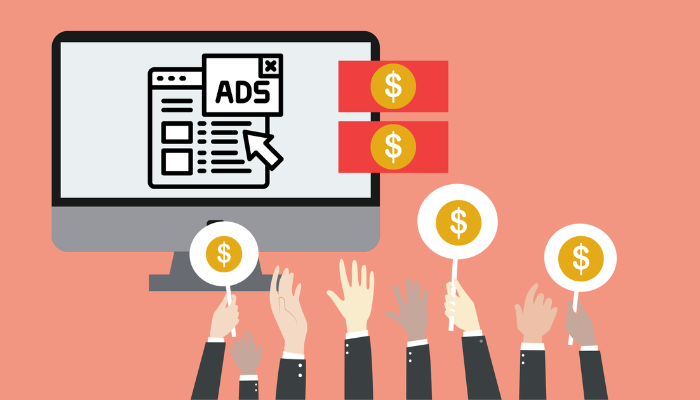In the fast-paced world of digital advertising, header bidding has emerged as a transformative technology, redefining how ad auctions operate. This innovative approach offers a more transparent, competitive, and profitable process for publishers and advertisers alike. Here’s a closer look at what header bidding entails and how it’s reshaping the advertising ecosystem.
What Is Header Bidding?
Header bidding is a programmatic advertising method that allows publishers to offer their ad inventory to multiple ad exchanges simultaneously—prior to calling their ad server. Unlike the traditional “waterfall” approach, where ad networks bid sequentially in a predetermined order, header bidding invites multiple bidders to compete at once. This ensures publishers maximize revenue and gives advertisers equal opportunities to secure ad impressions.
How Header Bidding Works
Header bidding operates through a piece of JavaScript code embedded in a website’s header. Here’s the step-by-step process:
- Bidding Initiation:
When a user loads a webpage, the JavaScript triggers an auction across various demand sources, including ad exchanges, supply-side platforms (SSPs), and direct advertisers. - Data Sharing:
User information—such as demographics, browsing patterns, and device type—is sent with the bid request. This data allows advertisers to make more precise and competitive bids. - Real-Time Auction:
Bids from all participating demand sources are collected and compared. The process is lightning-fast, often completed within milliseconds to ensure minimal impact on page load times. - Ad Server Integration:
The highest bids are sent to the publisher’s ad server, where they compete with bids from direct sales or primary ad networks. - Ad Display:
The ad server selects the winning bid, usually based on the highest offer, although factors like user experience and ad relevance can also play a role.
Why Header Bidding Is a Game-Changer
Header bidding has revolutionized digital advertising in several key ways:
- Boosted Competition: Allowing multiple demand sources to bid simultaneously increases competition, driving up prices for ad impressions and boosting publisher revenue.
- Enhanced Transparency: Smaller ad exchanges get equal opportunities to compete, creating a fairer and more transparent auction process.
- Higher Fill Rates: Inventory that might go unsold in traditional setups has multiple chances to be purchased, increasing fill rates.
- Improved Ad Relevance: Advertisers can bid based on detailed user data, leading to ads that better align with user interests, which can enhance engagement and performance.
Challenges and Drawbacks
Despite its advantages, header bidding presents some challenges:
- Technical Complexity: Proper implementation and optimization require expertise. Without careful management, page load times may increase, negatively impacting user experience.
- Ad Fraud Risks: Increased ad calls may expose publishers to higher risks of ad fraud.
- Privacy Concerns: Sharing user data with multiple platforms raises privacy issues, making compliance with regulations like GDPR and CCPA critical.
- Management Overhead: Handling multiple demand partners with varying standards and payment systems can be time-consuming for publishers.
Innovations in Header Bidding
The technology continues to evolve to address these challenges:
- Server-Side Header Bidding: This method moves the auction process off the user’s device to reduce page latency.
- Prebid.js: An open-source solution simplifies header bidding implementation by standardizing bidder management.
- Support for New Formats: Header bidding is expanding to accommodate video, native, and mobile ads, making it more versatile across diverse content types.
Broader Impacts on the Advertising Industry
Header bidding has far-reaching effects on the digital advertising ecosystem:
- Empowering Publishers: Publishers gain greater control over their inventory, enabling them to prioritize partnerships that align with their goals.
- Pushing Innovation: Traditional ad networks must adapt or risk losing relevance, fostering innovation throughout the industry.
- Better Advertiser Insights: Advertisers gain access to premium inventory and clearer data on how their ads perform, improving campaign efficiency.
The Future of Header Bidding
Header bidding is poised to remain a cornerstone of programmatic advertising. Here’s what lies ahead:
- AI and Machine Learning: Advanced technologies will refine bidding strategies, optimize ad placements, and predict the best audience matches.
- Privacy-Focused Solutions: As privacy regulations tighten, header bidding will likely pivot toward contextual advertising instead of relying on user tracking.
- Cross-Platform Expansion: The growth of connected TV (CTV) and mobile usage means header bidding will adapt to deliver seamless ad experiences across devices.
Advancing the Digital Advertising Landscape
Header bidding has reshaped how digital advertising operates, offering a more competitive, efficient, and transparent auction process. For publishers, it unlocks revenue potential. For advertisers, it provides access to premium inventory. By ensuring every ad impression achieves its true market value, header bidding continues to drive innovation and effectiveness across the advertising industry.



